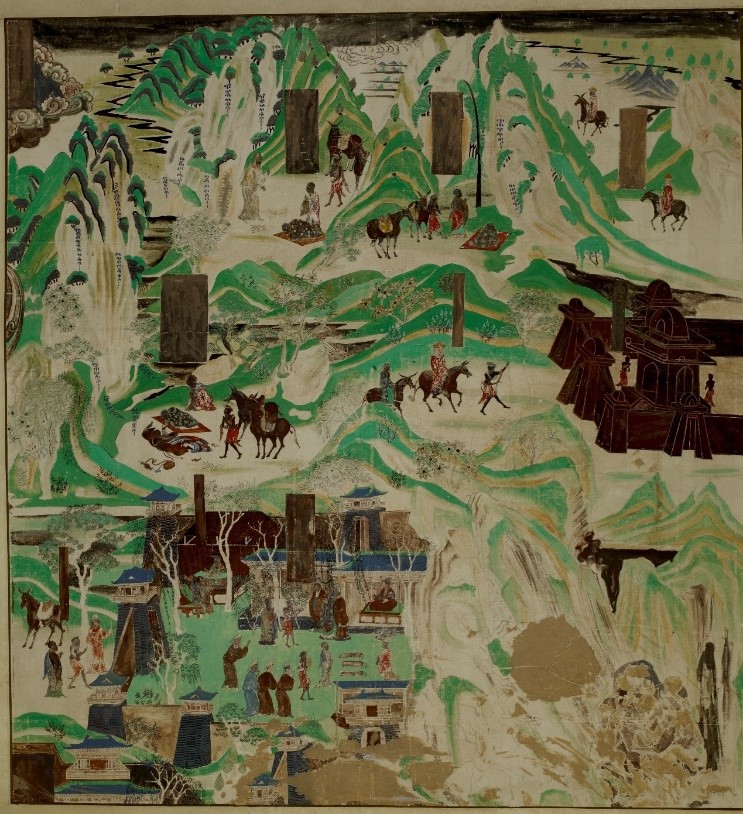
Jointly organized by the National Art Museum of China and the Gansu Provincial Administration of Cultural Heritage, the Ink Splendor and Cultural Context: Gansu Silk Road Art Treasures Exhibition opened on March 11 at the National Art Museum of China. The event showcases 240 pieces (set) of precious artifacts from the Dunhuang Academy, Gansu Provincial Museum, Gansu Jiandu Museum, and the National Art Museum of China.
The exhibition is divided into two sections: “The Brilliance of Painting and Sculpture” and “The Splendor of Calligraphy and Engraving”. The collection consists of painted pottery, bamboo slips, silk manuscripts, pictorial bricks, decorative tiles, pottery figurines, wooden figurines, Buddhist sutras, painted sculptures and mural replicas. Notable highlights include a painted pottery bowl engraved with the sign of ”フ” at the brim from the Neolithic period; the Fangmatan Maps—seven wooden maps dated circa 300 BCE; a bamboo manuscript of Yili (Ceremonies and Rites), a silk manuscript of a personal letter, a calligraphy brush inscribed with “Baima Zuo”, and wooden figurines dating from the Han dynasty (202 BCE–220 CE). Other significant artifacts include the Sufu edition of the Chunhua Ge Tie calligraphy stele from the Ming dynasty (1368–1644) and Pan Jiezi’s painting Creators of Grotto Art.
The Fangmatan Maps (a.k.a. The Qin Maps), excavated from Fangmatan in modern-day Tianshui, Gansu province, are the earliest extant Chinese maps. The maps’ front side depicts mountains, waterways, valleys, passes, roads and other topographical features, along with twelve place names. As a “practical map”, it reflects the Qin State’s emphasis on applied knowledge. The historical and cultural information recorded on this artifact offers invaluable insights into the development of ancient Chinese cartography, surveying and geography.
The exhibition is open until August 17.
Source: gscn.com.cn
Image Source: National Art Museum of China
